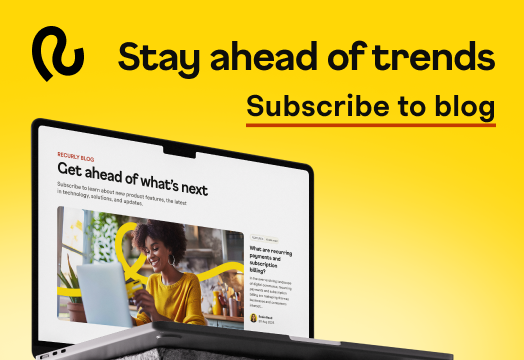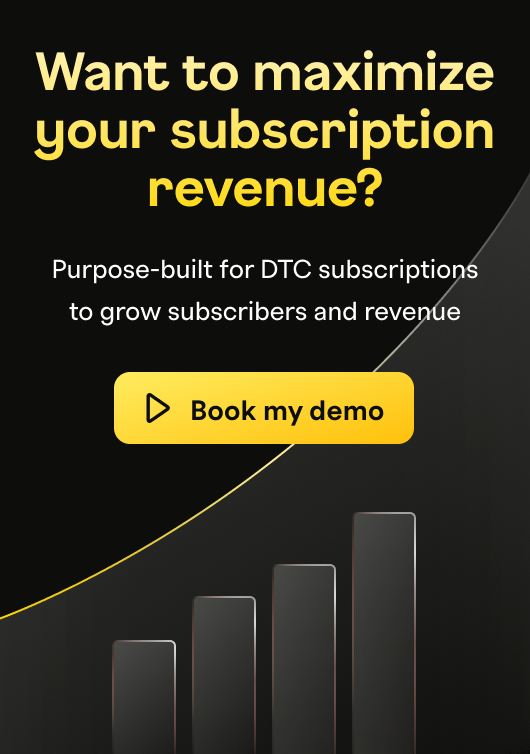Innovation in subscriptions: 5 key takeaways

It seems like every industry, from fitness and fashion to entertainment and education, has embraced the subscription business model in one way or another. With recurring payments everywhere you look, you might feel tempted to think there’s no more room for innovation in the subscription space.
Ask companies like Wyze, SoundCloud, and Adyen, however, and they’ll tell you differently: by constantly experimenting with new pricing plans, payment strategies, and subscriber experiences, subscription businesses have nowhere to go but up. Recurly’s own Jenna Wyer, VP of Business Development, sat down last week for a discussion featuring executives from Wyze, SoundCloud, and Adyen to discuss the subscription innovations they’re seeing (and putting into practice). Here are five quick takeaways from the discussion.
1. Pricing and packaging flexibility is key to subscriber acquisition
The days of a single “one-size-fits-all” subscription offering are long gone. According to Kateryna Glushchuk, Sr. Product Manager at SoundCloud, consumers want to see tailor-made pricing based on their individual needs and the feature sets offered. Kateryna added that experimenting with different promotional offers and pricing tiers has helped drive subscriber acquisition—“we’re constantly iterating,” she noted.
She also noted that consumers want to choose the number of billing cycles that works best for them: it may be monthly for some folks and quarterly or even annually for others.
2. Consumers really care about payment flexibility
If your payment options involve only traditional credit card payments, you’re far behind subscription model companies like Wyze. According to Logan Dunn, Wyze’s Head of Growth, consumers are increasingly clamoring for a variety of payment options, especially PayPal and Apple Pay. He mentioned that despite the fees associated with in-app purchases, offering these has been a huge boon to Wyze because consumers don’t have to venture anywhere else to make a payment—it’s all seamlessly embedded in the app experience.
Additionally, Logan noted, many consumers want the option to pay for a single subscription and split that cost with another person, a business model that makes sense for things like Internet-connected cameras, where more than one person benefits and wants access to the same service.
3. It's not just you: no merchant wants the burden of PCI compliance
PCI compliance can be costly, complicated, and frustrating for merchants to deal with, according to Sophia Goldberg, who manages Product Growth at Adyen. That’s why gateways, processors, and payment platforms have increasingly moved toward network tokenization and other advancements that enable them to take the PCI compliance burden off merchants’ shoulders. Ultimately, for merchants, it comes down to reducing involuntary churn: the less of a hassle and potential problem payments are for a subscription business, the less likely they are to experience failed payments.
4. Bundling hardware and subscriptions is a recipe for success
Companies like Peloton have popularized the notion of attaching a subscription to a hardware product, and Wyze has also seen immense success from following the same strategy. On Wyze’s website, you can choose either to purchase a Wyze camera with or without an initial subscription, but the price for either option is the same. As a result, according to Dunn, consumers are much more likely to pick up the hardware + subscription bundle, and Wyze is more likely to gain a customer with a much higher LTV. “When we presented this option, we saw more than 50% of our users buying the hardware plus the subscription,” Logan said.
5. A great cancellation experience is incredibly important
Most companies’ cancellation experience is an afterthought at best, but Kateryna said carefully considering what this flow looks like has helped SoundCloud mitigate voluntary churn. SoundCloud asks early on in the process why consumers are cancelling and personalizes the flow using this information: for instance, if the subscriber indicates that price is an obstacle, SoundCloud offers a lower-priced plan or a discount if possible.
You can also leverage the data you have on hand to tell subscribers the value they’ve gotten from your product offering (e.g., how many boxes you’ve sent them or how much entertainment they’ve streamed). Finally, if a subscriber does end up cancelling, ask them for feedback so you can learn how to make your subscription offering more compelling and reduce your voluntary churn rates.
Want more valuable insights from Logan, Sophia, and Kateryna? Check out the full 30 minute recording!


